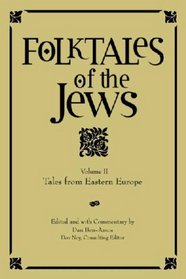Search -
Folktales of the Jews, Vol 2: Tales from Eastern Europe
Folktales of the Jews Vol 2 Tales from Eastern Europe
Author:
Tales from Eastern Europe presents 71 tales from Ashkenasic culture in the most important collection of Jewish folktales ever published. It is the second volume in Folktales of the Jews, the five-volume series to be released over the next several years, in the tradition of Louis Ginzberg's classic, Legends of the Jews. — The tales here and th... more »
Author:
Tales from Eastern Europe presents 71 tales from Ashkenasic culture in the most important collection of Jewish folktales ever published. It is the second volume in Folktales of the Jews, the five-volume series to be released over the next several years, in the tradition of Louis Ginzberg's classic, Legends of the Jews. — The tales here and th... more »
ISBN-13: 9780827608306
ISBN-10: 0827608306
Publication Date: 5/7/2007
Pages: 550
Rating: ?
ISBN-10: 0827608306
Publication Date: 5/7/2007
Pages: 550
Rating: ?
0 stars, based on 0 rating
Publisher: Jewish Publication Society of America
Book Type: Hardcover
Members Wishing: 3
Reviews: Amazon | Write a Review
Book Type: Hardcover
Members Wishing: 3
Reviews: Amazon | Write a Review
Genres:
- Literature & Fiction >> Genre Fiction >> Fairy Tales
- Literature & Fiction >> World Literature >> Jewish
- Literature & Fiction >> Mythology & Folk Tales




